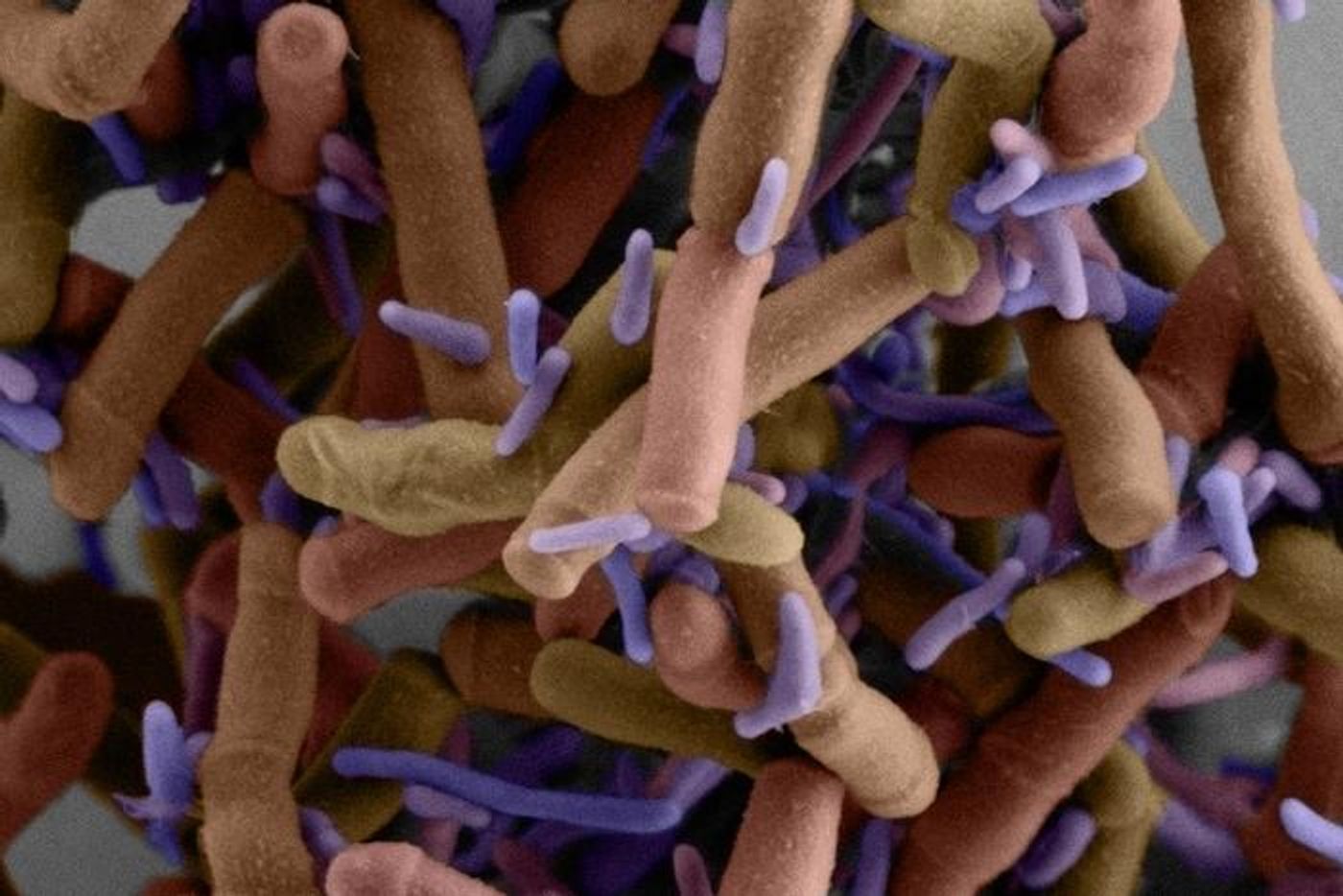Revealing More About the Epibiotic Life of Microbial Dark Matter
There are bacteria that researchers are very familiar with; some of them are common environmental microbes, and range from harmless to strains that can easily cause infection in animals or people, like Staphylococcus aureus. But there are probably trillions of other microbes that we know little or nothing about. The growth conditions and nutritional requirements of many of these organisms are also a mystery. So, it is extremely challenging to study them because they cannot usually be cultured, and large numbers of cells are usually needed for laboratory assays.
Patescibacteria are an example of bacteria that seem common in many environments, but we don't really know much about them because we can't usually grow them. They often show up in metagenomic studies that use genetic tools to identify the species in some sample, but scientists know little about them. They are considered a type of so-called microbial dark matter. On the rare occasions they have been successfully grown in the lab, they have only been cultured on the surfaces of other, bigger microbes. Epibiotic organisms are those that rely on another organism to survive.
The Patescibacteria that were studied in this work often appear in land and water habitats. They also live in the human mouth as part of the oral microbiome, and have been there since the Middle Stone Age or longer. These Patescibacteria are a type of Saccharibacteria, and have been associated with human oral health.
Although metagenomics can reveal the microbes that live on and inside of our bodies, DNA sequences alone don't tell us whether they are a benefit or a detriment, particularly when it comes to uncharacterized organisms, said study co-author Nitin S. Baliga of the Institute for System Biology in Seattle.
Scientists have now learned more about these epibionts with new methods that allowed the investigators to genetically manipulate the microbes.
Patescibacteria do not carry genes that are crucial for the production of essential molecules such as amino acids, fatty acids that are part of membranes, and DNA nucleotides. Thus, scientists have hypothesized that Patescibacteria need other bacteria to live.
In the oral microbiome, Saccharibacteria uses other microbes called Actinobacteria to serve as hosts. With the new genetic tools, the researchers identified the genes that Saccharibacterium needs to grow. The study suggested that certain structures on the cell surface could help Saccharibacteria attach to host cells. It also identified a secretion system that could be a nutrient transport mechanism. The findings have been reported in Cell.
The investigators also engineered Saccharibacteria cells that produce fluorescent proteins, and took time-lapse images of them with their hosts.
"Time-lapse imaging of Saccharibacteria-host cell cultures revealed surprising complexity in the lifecycle of these unusual bacteria," noted study co-author S. Brook Peterson, a senior scientist in the lab of corresponding study author Joseph D. Mougous at the University of Washington.
Some Saccharibacteria were found to function as mother cells; they latched onto a host cell and then continuously budded small offspring. The offspring went off in search of other host cells, and some progeny then became mother cells themselves.
The study suggested that there could be "rich reserves of microbial dark matter" waiting to be discovered in these and other mysterious microbes.









